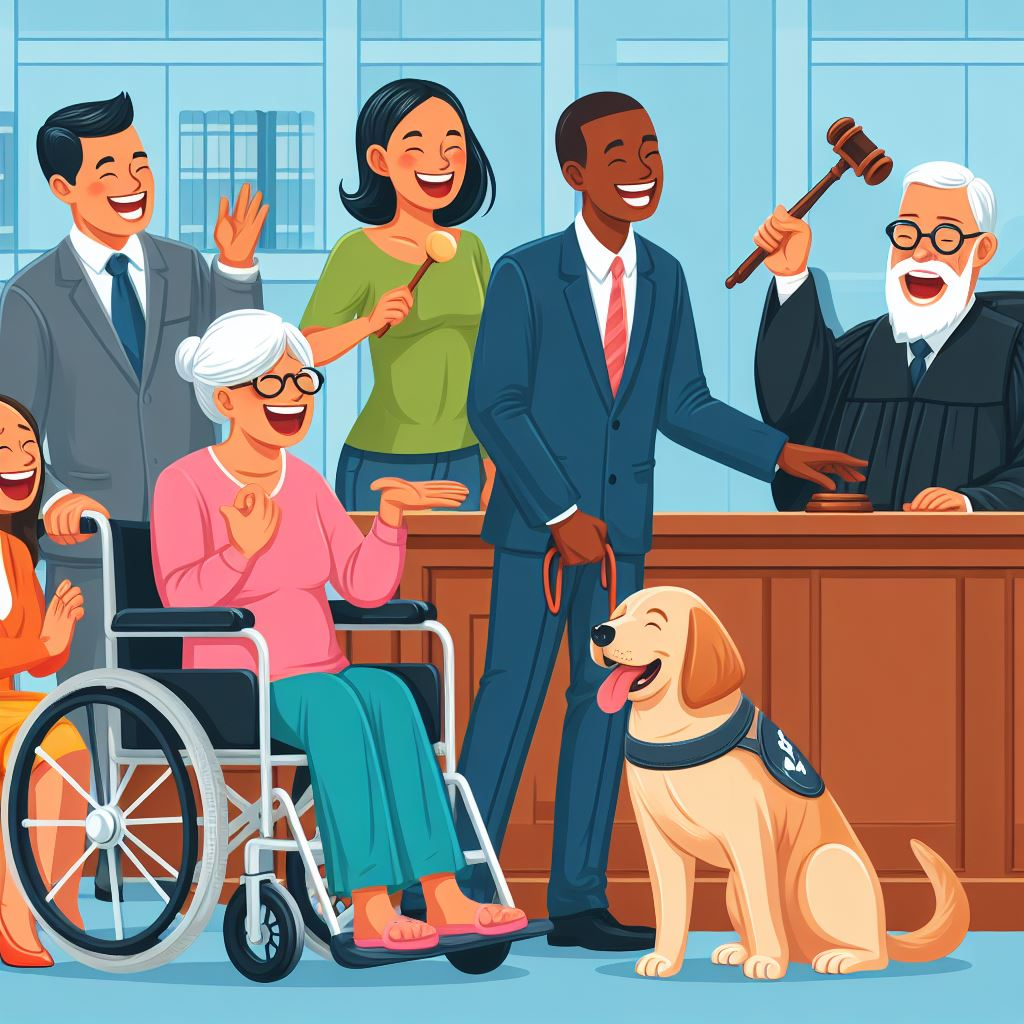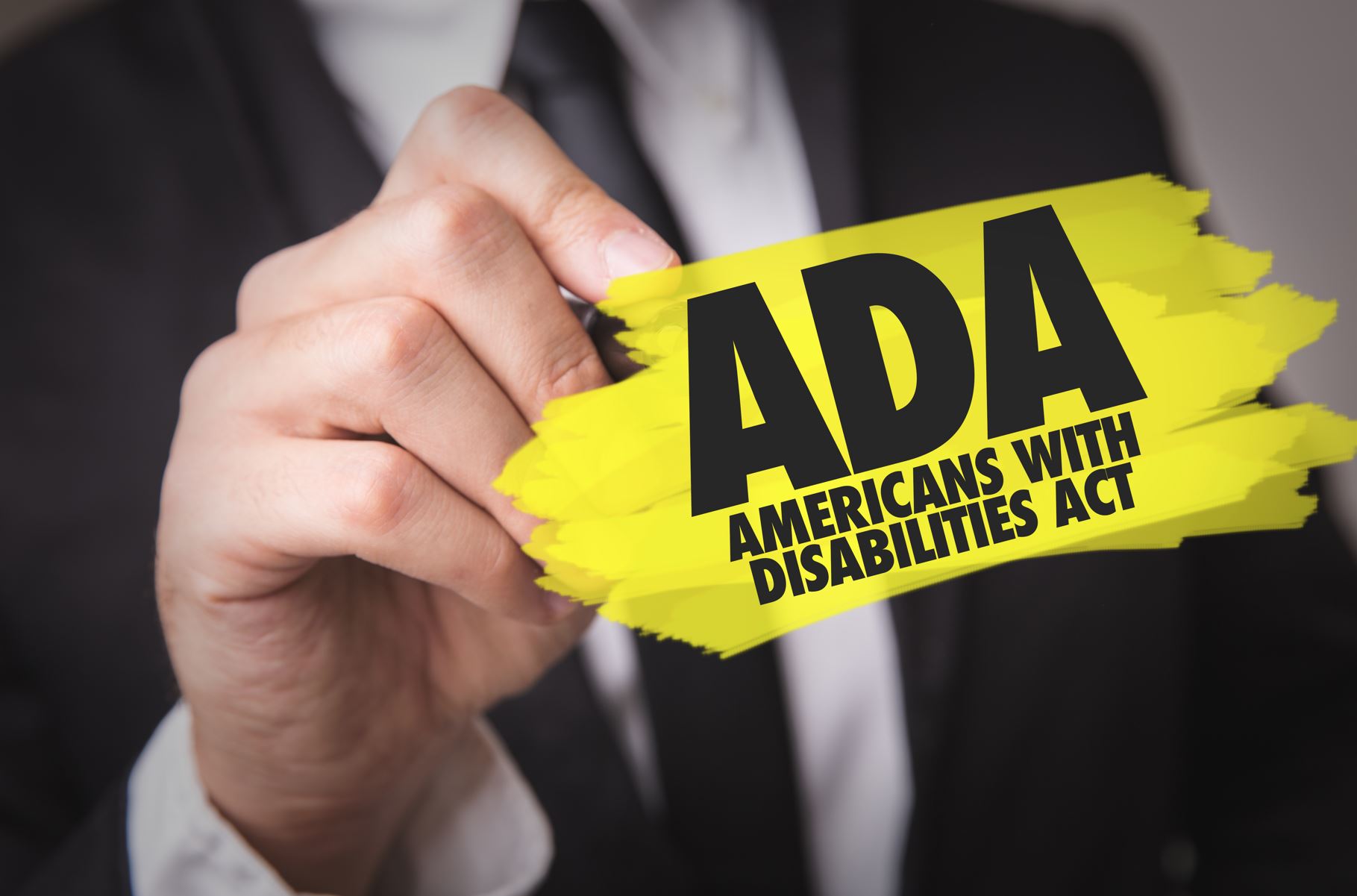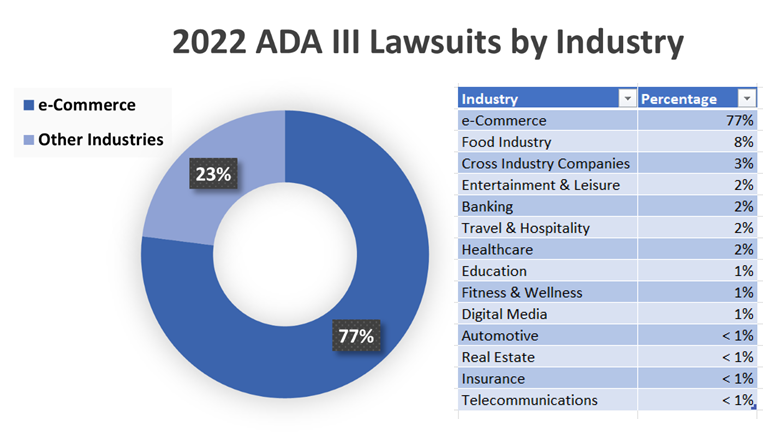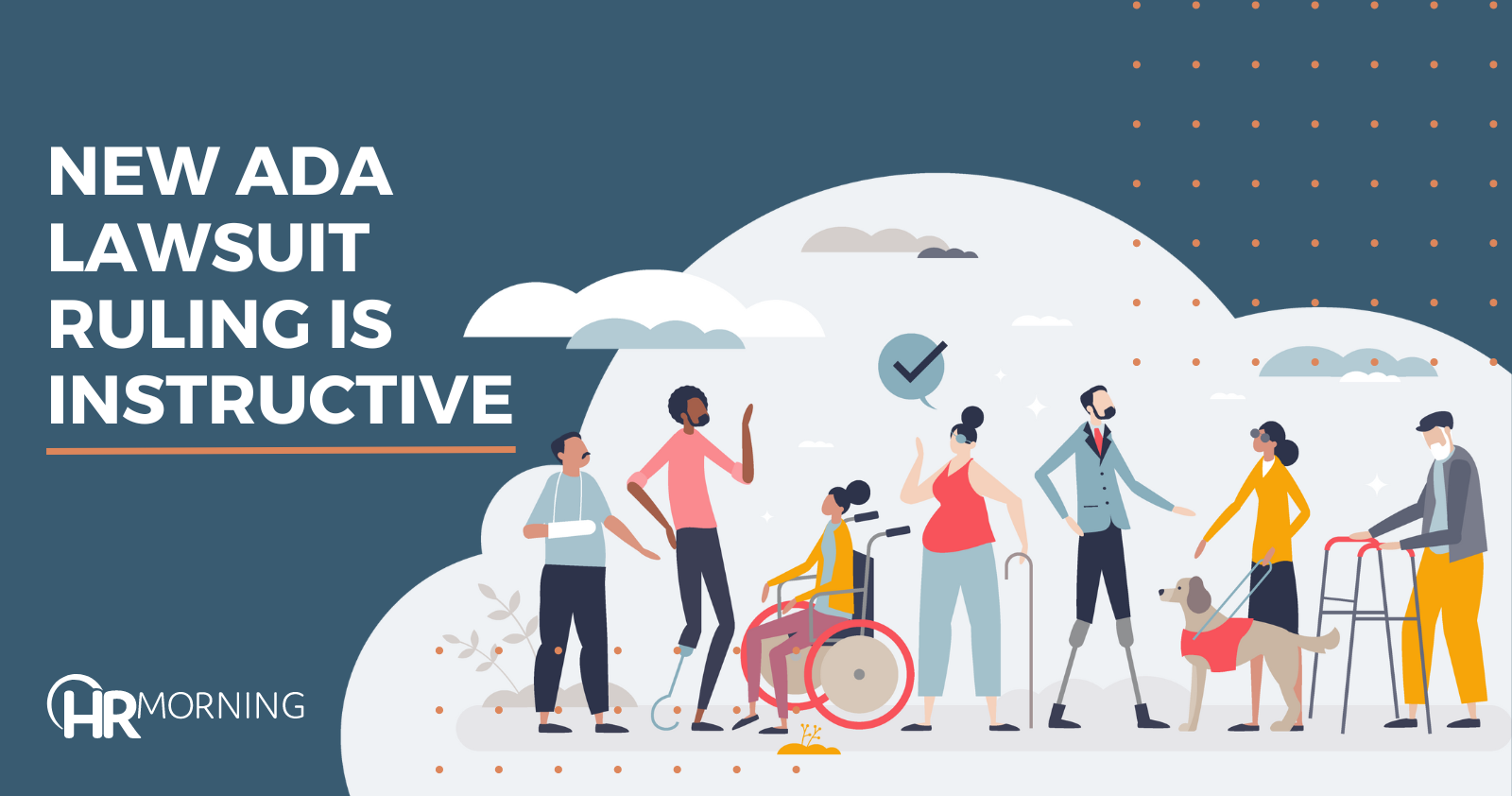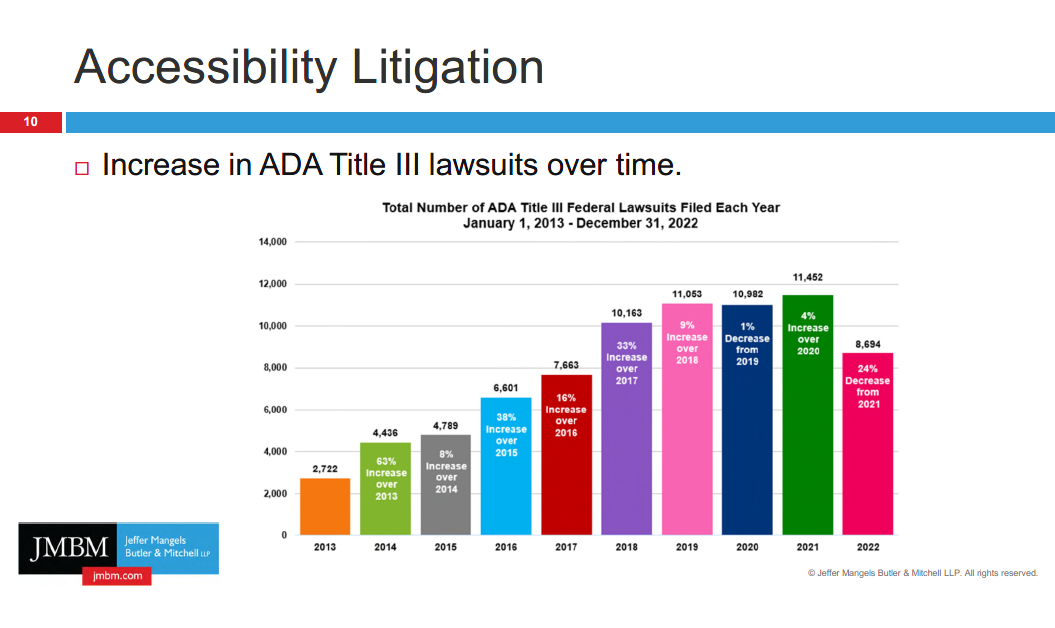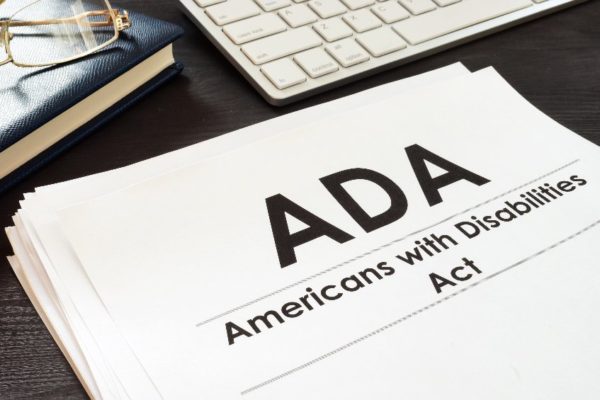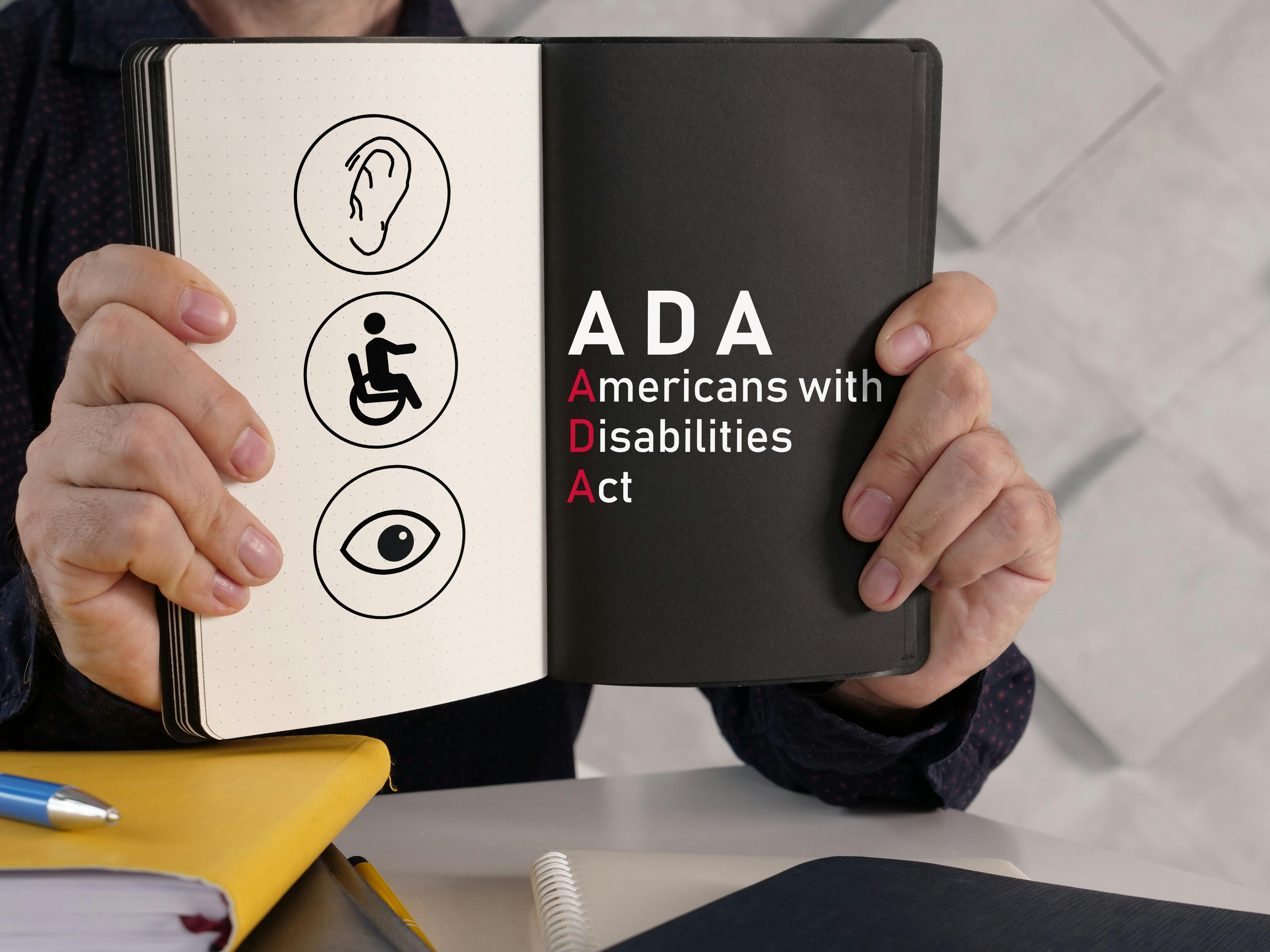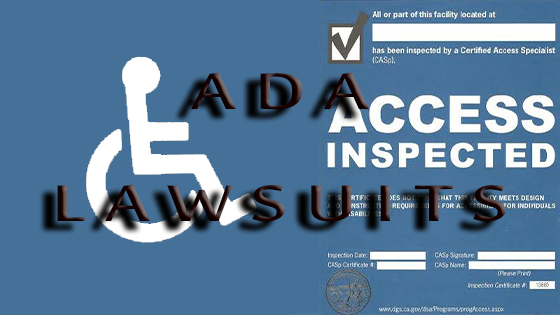What Are The Chances Of Winning An Ada Lawsuit
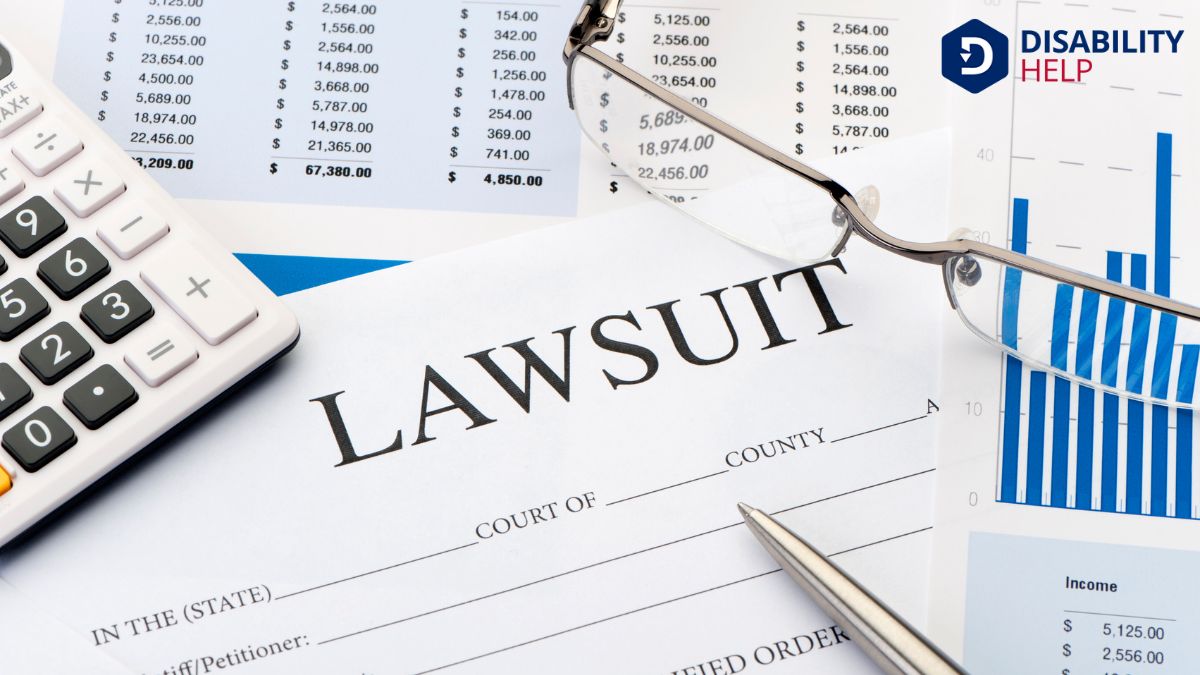
For individuals with disabilities facing discrimination, the Americans with Disabilities Act (ADA) represents a crucial lifeline. But navigating the legal landscape of an ADA lawsuit can be daunting, leaving many wondering about their prospects for success. The path to justice is rarely straightforward, and understanding the probabilities involved is critical for anyone contemplating such legal action.
This article delves into the complex factors influencing the chances of winning an ADA lawsuit, drawing on statistical data, expert insights, and legal precedents. It aims to provide a comprehensive overview of the challenges and opportunities inherent in these cases, offering a realistic assessment of the odds and informing potential plaintiffs about what to expect. Understanding these odds requires a close look at the types of cases, the burden of proof, and the varying interpretations of the law across different jurisdictions.
Understanding the Landscape of ADA Lawsuits
ADA lawsuits encompass a wide range of claims, broadly categorized under employment, public accommodations, and government services. Title I addresses employment discrimination, Title II concerns state and local government services, and Title III covers public accommodations like restaurants and stores. The specific elements required to prove a violation vary depending on the title under which the claim is brought.
The burden of proof in an ADA case rests squarely on the plaintiff. They must demonstrate they have a disability as defined by the ADA, are qualified for the job or service in question, and experienced discrimination because of their disability. Meeting this burden often involves substantial documentation, expert testimony, and a clear demonstration of discriminatory intent or effect.
Key Factors Influencing Success
Several factors play a pivotal role in determining the outcome of an ADA lawsuit. The strength of the evidence is paramount, including medical records, witness testimonies, and documented instances of discriminatory behavior. Cases with clear and compelling evidence are far more likely to succeed than those relying on circumstantial evidence.
Another critical element is the employer's or service provider's awareness of the disability and their efforts to provide reasonable accommodations. A lack of accommodation, when feasible, often strengthens a plaintiff's case. Conversely, demonstrating good faith efforts to accommodate can significantly weaken the claim.
The legal precedent in the relevant jurisdiction also carries substantial weight. Courts often look to previous ADA cases to guide their decisions. A history of favorable rulings for plaintiffs in similar situations can improve the odds of success, while a pattern of defense wins can make the path more challenging.
Statistical Insights and Data Analysis
Obtaining precise statistics on the win rate of ADA lawsuits is difficult due to the variations in case types and reporting methods. However, data from the Equal Employment Opportunity Commission (EEOC) and studies conducted by legal organizations offer some insights. The EEOC, which handles employment-related ADA complaints, resolves many cases through settlement or mediation before they reach trial.
According to EEOC data, a significant portion of ADA complaints are resolved through settlement, suggesting a willingness on the part of employers to avoid costly litigation. However, cases that proceed to trial often face a less favorable outcome for the plaintiff. Studies suggest that plaintiffs win only a minority of ADA cases that go to trial, often below 40%. This highlights the challenges of proving discrimination in a courtroom setting.
These statistics should be interpreted with caution, as they don't capture the full picture. Settlement rates reflect a variety of factors beyond the strength of the plaintiff's case, including the cost of litigation and the desire to avoid negative publicity. Furthermore, outcomes can vary substantially depending on the specific type of ADA claim.
The Role of Legal Representation
Experienced legal representation is crucial for navigating the complexities of an ADA lawsuit. An attorney specializing in disability law can help plaintiffs gather evidence, build a strong case, and effectively present their arguments in court. Furthermore, an attorney can assess the merits of the case and advise on whether to pursue litigation or seek alternative dispute resolution methods like mediation.
Studies have shown that plaintiffs with legal representation are more likely to achieve a favorable outcome than those who represent themselves. The legal process can be overwhelming, and an experienced attorney can provide invaluable guidance and advocacy. Choosing the right attorney can significantly improve the chances of success.
However, the cost of legal representation can be a barrier for some individuals with disabilities. Many attorneys offer contingency fee arrangements, where they only get paid if the plaintiff wins the case. This can make legal representation more accessible, but it's essential to understand the terms of the agreement and the potential costs involved.
Challenges and Considerations
ADA lawsuits present unique challenges that can impact the likelihood of success. The definition of "disability" under the ADA has been subject to interpretation and legal debate. Proving that a condition meets the ADA's definition can be a complex and time-consuming process.
Another challenge is demonstrating that the discrimination occurred "because of" the disability. Employers and service providers may argue that their actions were based on legitimate, non-discriminatory reasons. Overcoming this argument requires strong evidence of discriminatory intent or effect.
Furthermore, the ADA requires employers to provide "reasonable accommodations" to qualified individuals with disabilities. Determining what constitutes a "reasonable" accommodation can be a contentious issue. Employers may argue that a requested accommodation would create an undue hardship, which can be difficult for the plaintiff to overcome.
Looking Ahead: Evolving Interpretations and Future Trends
The interpretation of the ADA continues to evolve through court decisions and legislative amendments. Recent Supreme Court rulings have clarified certain aspects of the law, impacting the legal landscape for ADA cases. Staying informed about these developments is essential for understanding the current state of the law and its potential impact on future lawsuits.
As societal awareness of disability rights increases, we may see a rise in ADA litigation. Increased awareness and advocacy can empower individuals with disabilities to assert their rights and challenge discriminatory practices. This, in turn, could lead to further clarifications and interpretations of the law.
Ultimately, the decision to pursue an ADA lawsuit is a personal one, weighing the potential benefits against the inherent risks and challenges. While the odds of winning may not be guaranteed, understanding the factors that influence success can empower individuals with disabilities to make informed decisions and advocate for their rights effectively. Consulting with an experienced attorney is crucial to navigating this complex legal terrain and assessing the viability of a potential claim.
